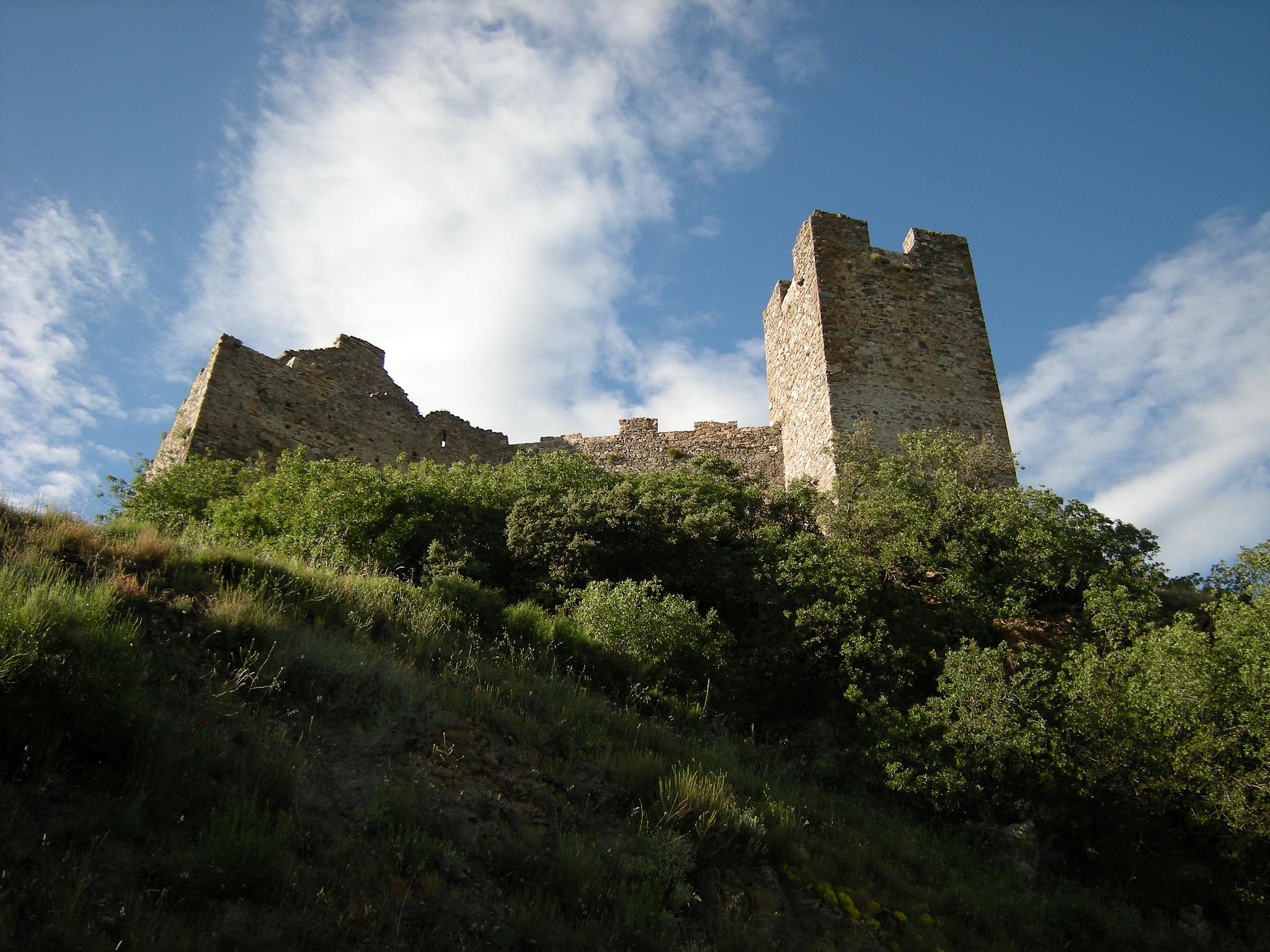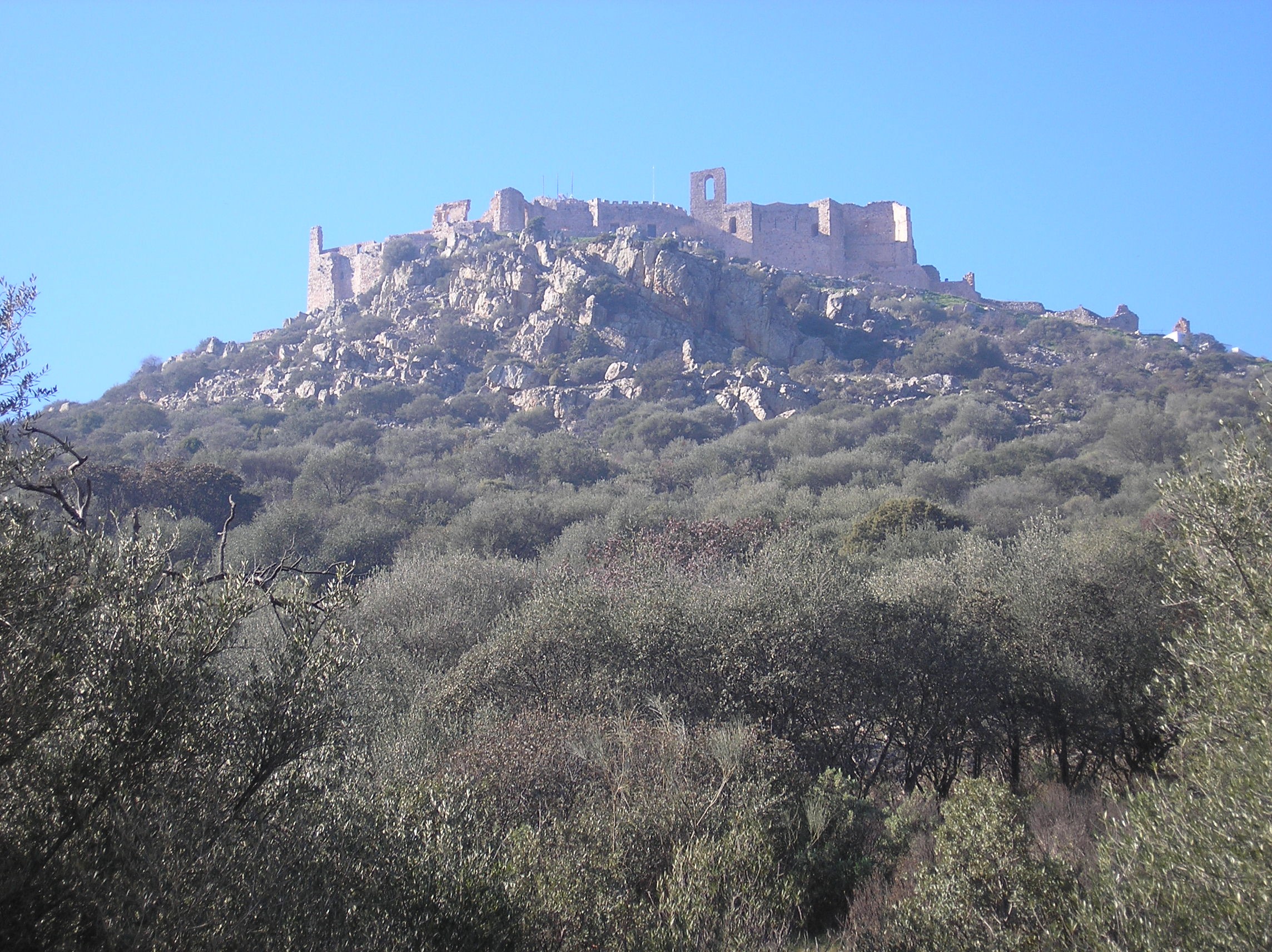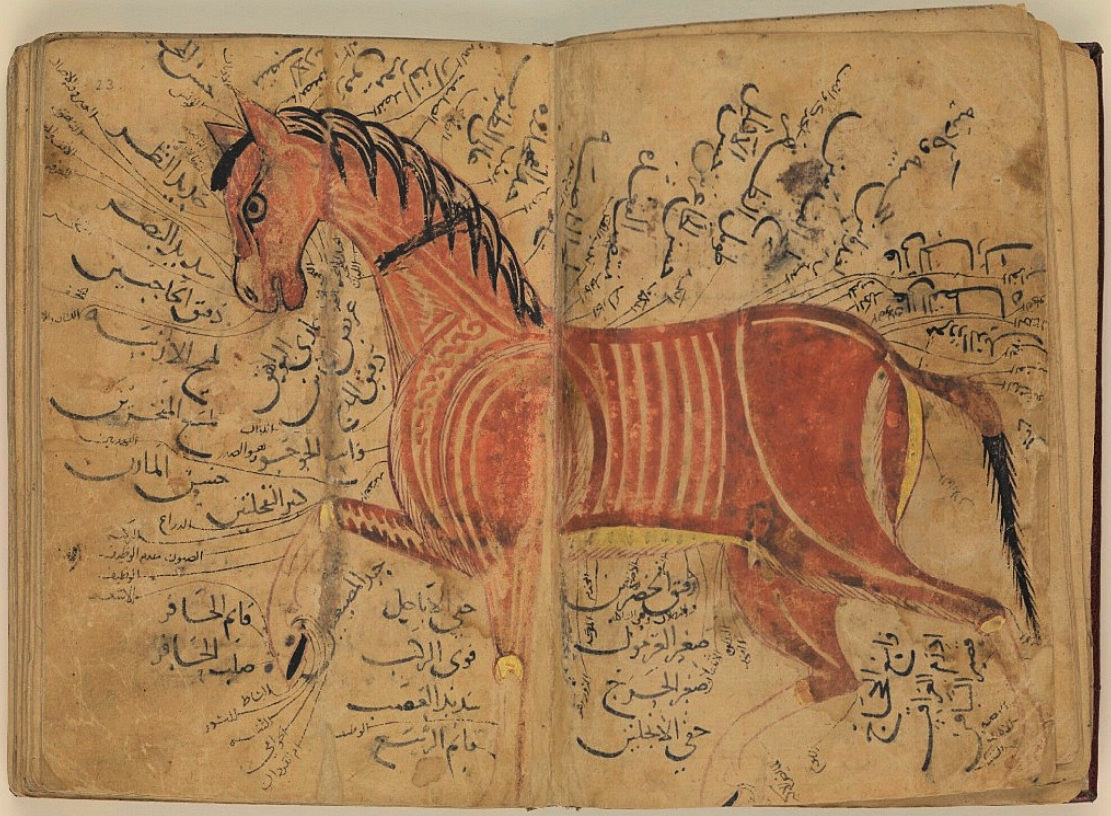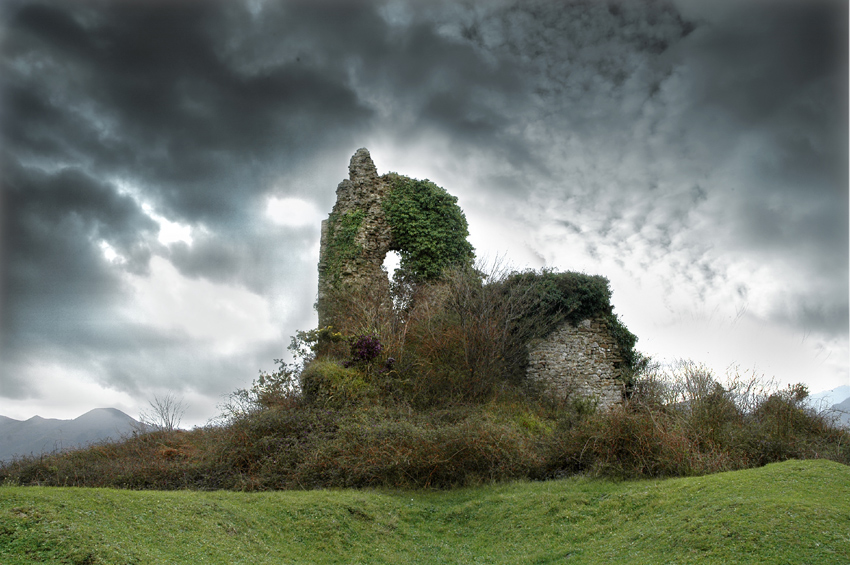|
Alférez
In medieval Iberia, an ''alférez'' (, ) or ''alferes'' (, ) was a high-ranking official in the household of a king or magnate. The term is derived from the Arabic ('' al-fāris''), meaning "horseman" or "cavalier", and it was commonly Latinised as ''alferiz'' or ''alferis'', although it was also translated into Latin as ''armiger'' or ''armentarius'', meaning " armour-bearer". The connection with arms-bearing is visible in several Latin synonyms: ''fertorarius'', ''inferartis'', and ''offertor''. The office was sometimes the same as that of the standard-bearer or ''signifer''.Simon Barton, ''The Aristocracy in Twelfth-century León and Castile'' (Cambridge, 1997), 142–44. The ''alférez'' was generally the next highest-ranking official after the majordomo.Simon Barton, ''The Aristocracy in Twelfth-century León and Castile'' (Cambridge, 1997), 59. He was generally in charge of the king or magnate's ''mesnada'' (private army), his personal retinue of knights, and perhaps also o ... [...More Info...] [...Related Items...] OR: [Wikipedia] [Google] [Baidu] |
Álvaro Núñez De Lara (died 1218)
Álvaro Núñez de Lara ( 11701218) was a Castilian nobleman who played a key role, along with other members of the House of Lara, in the political and military affairs of the Kingdoms of León and Castile around the turn of the 13th century. He was made a count in 1214, served as ''alférez'' to King Alfonso VIII of Castile, was the regent during the minority of King Henry I of Castile, and was ''mayordomo'' (steward) to King Alfonso IX of León. He opposed Queen Berengaria of Castile and her son King Ferdinand III and supported the King of León during the war between the two countries of 1217–1218. At the end of his life he was a knight of the Order of Santiago, in whose Monastery of Uclés he was buried. Family His parents both came from powerful houses with close connections to the Leonese royalty. His father, Count Nuño Pérez de Lara, was regent during the minority of Alfonso VIII of Castile, and son of Count Pedro González de Lara, the one-time lover of Queen ... [...More Info...] [...Related Items...] OR: [Wikipedia] [Google] [Baidu] |
Ponce De Minerva
Ponce de Minerva (1114/1115 – 27 July 1175) was a nobleman, courtier, governor, and general serving, at different times, the kingdoms of León and Castile. Originally from Occitania, he came as a young man to León (1127), where he was raised probably in close connexion to the royal family. His public career, first as a courtier and knight in the military retinue of Alfonso VII of León and Castile, began in 1140. By later historians he was implicated in the strife between Alfonso's successors, Sancho III of Castile and Ferdinand II of León, but he was generally loyal to the latter, although from 1168 to 1173 he was in voluntary exile serving Alfonso VIII of Castile. Ponce had a long and distinguished military career. He participated in at least twelve campaigns, more than half of them campaigns of ''Reconquista'' fought against the Moors, but also campaigns against Navarre (1140), Portugal (1141), and Castile (1162 and 1163), as well as one famous campaign against some Cas ... [...More Info...] [...Related Items...] OR: [Wikipedia] [Google] [Baidu] |
Gonzalo De Marañón
Gonzalo de Marañón (''floruit'' 1141–1178) was a Castilian magnate during the reigns of Alfonso VII (1126–57), Sancho III (1157–58), and Alfonso VIII (1158–1214). By January 1174 he had attained the rank of count (Latin ''comes''), the highest in the kingdom. He was one of the earliest members of the Spanish nobility to adopt a toponymic surname (in this case "de Marañón") as a family name. His interests lay in the far east of the kingdom, in areas once (and again today) a part Navarre, and his toponymic indicates Navarrese origins. Although, according to Luis de Salazar y Castro, his father was Rodrigo Pérez de Marañón, this filiation has not been documented. He married Mayor García de Aza, daughter of García Garcés de Aza and his wife, Sancha Pérez. Their marriage is first recorded in 1169, when Alfonso VIII made a donation of the village of Villasequilla to the couple. Gonzalo was a frequent recipient of royal largesse. On 19 September 1144 Alfonso VII ... [...More Info...] [...Related Items...] OR: [Wikipedia] [Google] [Baidu] |
Ramiro Fróilaz
Ramiro Fróilaz (''floruit'' 1120–1169) was a Leonese magnate, statesman, and military leader. He was a dominant figure in the kingdom during the reigns of Alfonso VII and Ferdinand II. He was primarily a territorial governor, but also a court figure, connected to royalty both by blood and by marriage. The military exploits of his sovereigns involved him against both the neighbouring kingdoms of Navarre and Portugal and in the ''Reconquista'' of the lands of al-Andalus. Family Ramiro was the eldest son of Fruela Díaz and Estefanía Sánchez of the Navarrese royal house, daughter of Sancho Garcés, Lord of Uncastillo. Ramiro's first wife was Inés (Agnès), perhaps a member of the French royal house or the family of the Counts of Armagnac. She was buried in the church of San Isidoro de León, where her epitaph names her husband and describes her as "descended from the kings of France". She was the mother of his eldest two sons, Alfonso and Fruela. On 22 September 1150 Ramir ... [...More Info...] [...Related Items...] OR: [Wikipedia] [Google] [Baidu] |
Nuño Pérez De Lara
Nuño Pérez de Lara (died 3 August 1177) was a Castilian nobleman, politician and military leader. He began his career at the court of the Emperor Alfonso VII, during whose reign he took part in the ''repoblación'' of the Extremadura and the defence of the Almohad frontier. Between 1164 and 1169 he governed Castile as regent for the underage Alfonso VIII, and he continued to exercise semi-regal power in the kingdom until 1176. He founded two monasteries and fostered the cult of Thomas Becket in Spain. He died taking part in the ''Reconquista'' of Cuenca. Family Nuño was the third of four sons of Pedro González de Lara and his wife Ava, probably from northern France.Barton, 269–70. This article relies heavily on these pages, which provide a comprehensive list of Nuño's issue, offices, ''tenencias'', and religious endowments, as well as known private transactions. His elder brothers were Álvaro and Manrique and he had a younger brother named Rodrigo. Sometime before Marc ... [...More Info...] [...Related Items...] OR: [Wikipedia] [Google] [Baidu] |
Manrique Pérez De Lara
Manrique Pérez de Lara (died 1164) was a magnate of the Kingdom of Castile and its regent from 1158 until his death. He was a leading figure of the House of Lara and one of the most important counsellors and generals of three successive Castilian monarchs: Alfonso VII (1126–57), Sancho III (1157–58) and Alfonso VIII (1158–1214). Parentage Manrique's father was Pedro González de Lara (died 1130). Of Pedro's rule and Manrique's succession to his position of honour and leadership in the ''Reconquista'', a contemporary writes: He took after his father in everything that he did. His father was Count Pedro of Lara, who ruled his own land for many years. The son also follows in all his father's footsteps. Still in the flower of youth, but enriched with honour and respected by the Emperor as is his nature, he was the upholder of the law, the worst scourge of the Moors. Manrique's mother Eva is of unknown parentage, but had previously been married to count García Ordóñez. O ... [...More Info...] [...Related Items...] OR: [Wikipedia] [Google] [Baidu] |
García Garcés De Aza
García Garcés de Aza ( la, Garsias Garsie de Aza; ''floruit'' 1126–1159) was a Castilian magnate "renowned for his wealth and dullness",Fletcher, 41. yet "a prominent figure in the later Andalusian campaigns of the Emperor between 1150 and 1157".Lipskey, 56. His toponymic appears in contemporary documents, referring to his ownership of the ''tenencia'' of Aza. His patronymic, "Garcés", reflects that he was son of count García Ordóñez, born to the latter's second wife, Eva, probably a Frenchwoman. After the death of García Ordóñez, she remarried to Pedro González de Lara, making García Garcés half-brother of Eva's children by Pedro and closely allied with the House of Lara. According to the '' Chronica Adefonsi imperatoris'', a contemporary account of the deeds of the Emperor Alfonso VII of León and Castile, when that king first entered the capital city of León after his succession in March 1126, García Garcés was among the Castilians who came to do homage an ... [...More Info...] [...Related Items...] OR: [Wikipedia] [Google] [Baidu] |
Pedro Ansúrez
Pedro Ansúrez (''floruit'' 1065–1117; died probably 9 September 1118) was a Kingdom of Castile, Castilian nobleman, count of Liébana, Saldaña, Palencia, Saldaña and Carrión de los Condes, Carrión in the closing decades of the eleventh century and the opening decades of the twelfth. He is considered the founder and first lord of Valladolid. Pedro was a descendant of the Beni Gómez family of Castilian nobility, the son of Ansur Díaz, by his first wife, whose name is unknown. His grandfather, Diego Fernández (count of Saldaña), Diego Fernández, was a count of Saldaña and Carrión. Pedro married twice, the first time by 17 June 1084Barton, ''Aristocracy'', 275–76. to Elo (or Eylo), daughter of Count Alfonso Muñoz and Aldonza González of Trigueros del Valle, Trigueros. She was dead by 17 September 1114, when Pedro made a donation for the good of her soul to the canons of the cathedral of Valladolid, and he appears the next day with his second wife, Elvira Sánchez, w ... [...More Info...] [...Related Items...] OR: [Wikipedia] [Google] [Baidu] |
Furusiyya
' (; also transliterated as ) is the historical Arabic term for equestrian martial exercise. ''Furūsiyya'' “Knighthood” is a martial tradition dating back to Pre-Islamic Arabia Its main branches concerned horsemanship (including aspects of both hippology and equestrianism), horse archery and use of the lance, with the addition of swordsmanship as fourth branch in the 14th century. The term is a derivation of () "horse", and in Modern Standard Arabic means "equestrianism" in general. The term for "horseman" or "cavalier" ("knight") is ,Daniel Coetzee, Lee W. Eysturlid, ''Philosophers of War: The Evolution of History's Greatest Military Thinkers'' (2013)p. 59 60, 63. "Ibn Akhī Hizām" ("the son of the brother of Hizam", viz. a nephew of Hizam Ibn Ghalib, Abbasid commander in Khurasan, fl. 840). which is also the origin of the Spanish rank of ''alférez''.The Perso-Arabic term for "''Furūsiyya'' literature" is or . is also described as a small encyclopedia about horses. ... [...More Info...] [...Related Items...] OR: [Wikipedia] [Google] [Baidu] |
Alfonso Núñez
Alfonso Núñez ('' fl.'' 1101–1135) was a Galician nobleman and military leader. He was the eldest son of Nuño Velázquez and Fronilde Sánchez, daughter of Count Sancho Ordóñez. From at least 28 January 1090 Nuño's power lay in the region of Limia. On 13 June 1104, he appears with his parents and siblings Menendo, Sancho, and Elvira in a donation to the monastery of Sahagún. Between 1 April 1101 and 24 October 1102 Alfonso served as the ''alférez'' of Raymond of Galicia. He was one of the few Galician magnates loyal to Queen Urraca during her conflict with her son by Raymond, Alfonso Raimúndez, which may be surprising in light of Alfonso Núñez's known political connexions with Raymond. Between May 1112 and 1 June 1125 Alfonso held the ''tenencia'' of Limia, as had his father. His importance to Urraca in Galicia is exemplified by the ''Historia compostellana'', which lists him first after Urraca's son when naming the leaders of the army which she assembled among "all ... [...More Info...] [...Related Items...] OR: [Wikipedia] [Google] [Baidu] |
Gonzalo Peláez
Gonzalo Peláez (died March 1138) was the ruler of the Asturias from 1110 to 1132, during the reigns of Queen Urraca (1109–26) and her son, Alfonso VII (1126–57). He held high military posts under the latter, but in 1132 he began a five-year rebellion against Alfonso, punctuated by three brief reconciliations. He died in exile in Portugal. Of uncertain origins, Gonzalo may have been the son of Pelayo Peláez and Mumadonna (Mayor) González. The only link is a charter of 1097 by which a certain ''Mummadonna cognomento domna Maiore Gundesaluiz'' ("Mumadonna called lady Mayor González") made a donation to the Diocese of Oviedo for the good of her soul and that of her husband, Pelayo Peláez, making reference to their son named Gonzalo. On 18 November 1118 a Gonzalo Peláez, perhaps not the same man, received lands in the Araduey valley in the province of León from Queen Urraca along with his wife Mayor Muñoz. If it is the same man he may have been Leonese rather than Asturian, a ... [...More Info...] [...Related Items...] OR: [Wikipedia] [Google] [Baidu] |
Pedro Alfonso
''Pulcher ut Absalon, virtute potens quasi Sanson, instructisque bonis, documenta tenet Salomonis''. " edrois handsome as Absalom, as strong as Samson, and he possesses the wisdom of Solomon." —'' Poema de Almería'', vv. 117–18 Pedro Alfonso or Alfónsez ( la, Petrus Adefonsi; floruit 1126–1173) was an Asturian magnate, dominating the region from 1139 until his death. He had vast landholdings in the Asturias, the region of León, and "kingdom" of Toledo, including in the cities of León and Toledo themselves, the most important cities of the realm. His commercial dealings were extensive, a sign of his economic power, and he loyally served Alfonso VII and his son Ferdinand II as a military commander and diplomat from 1128 until his death. Family Pedro was the son of Alfonso Vermúdez, himself the son of Bermudo Ovéquiz of the Vela family and Jimena Peláez, and Urraca Raimúndez, possibly the daughter of Raymond the Fratricide who had to fle ... [...More Info...] [...Related Items...] OR: [Wikipedia] [Google] [Baidu] |







